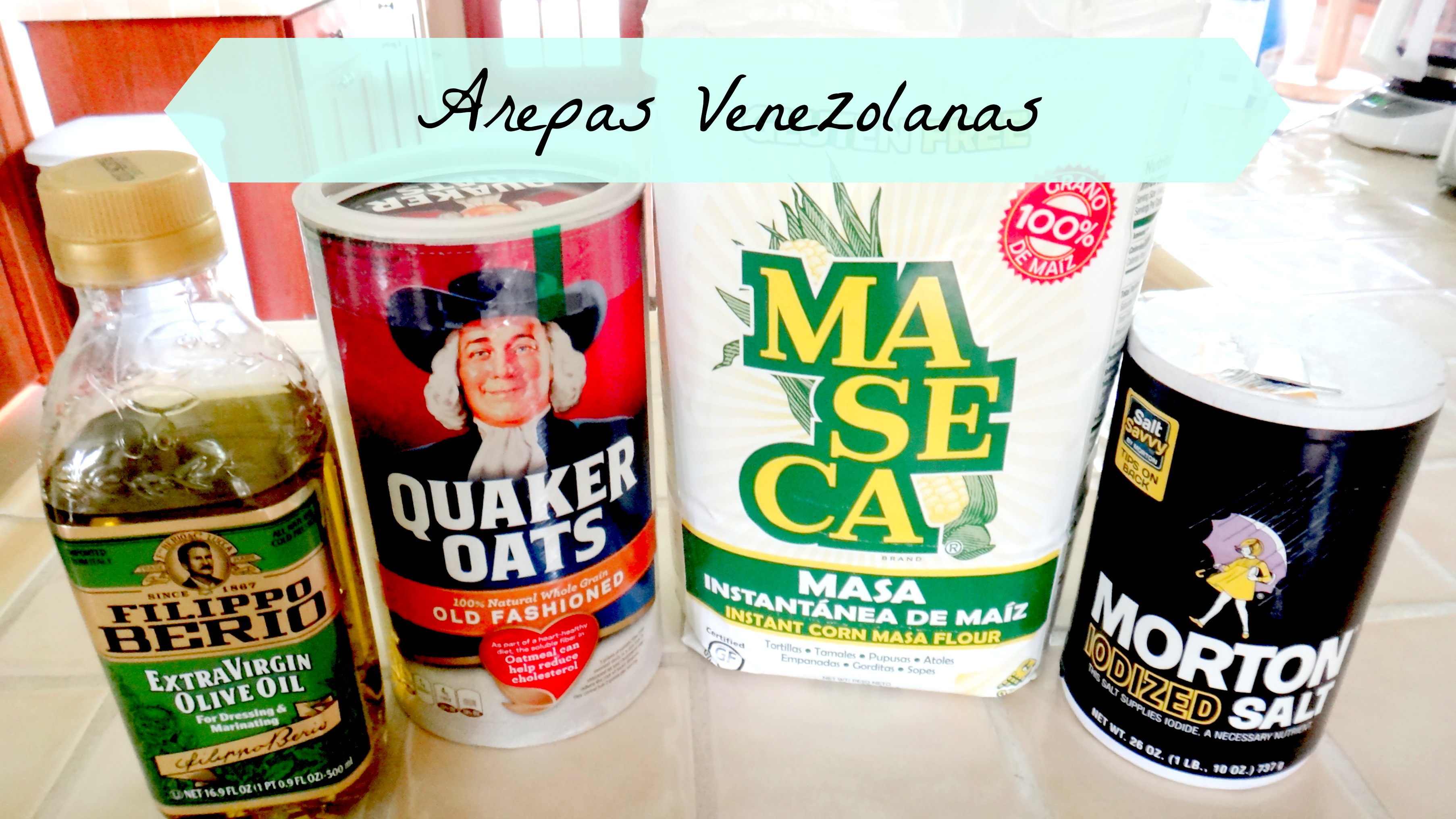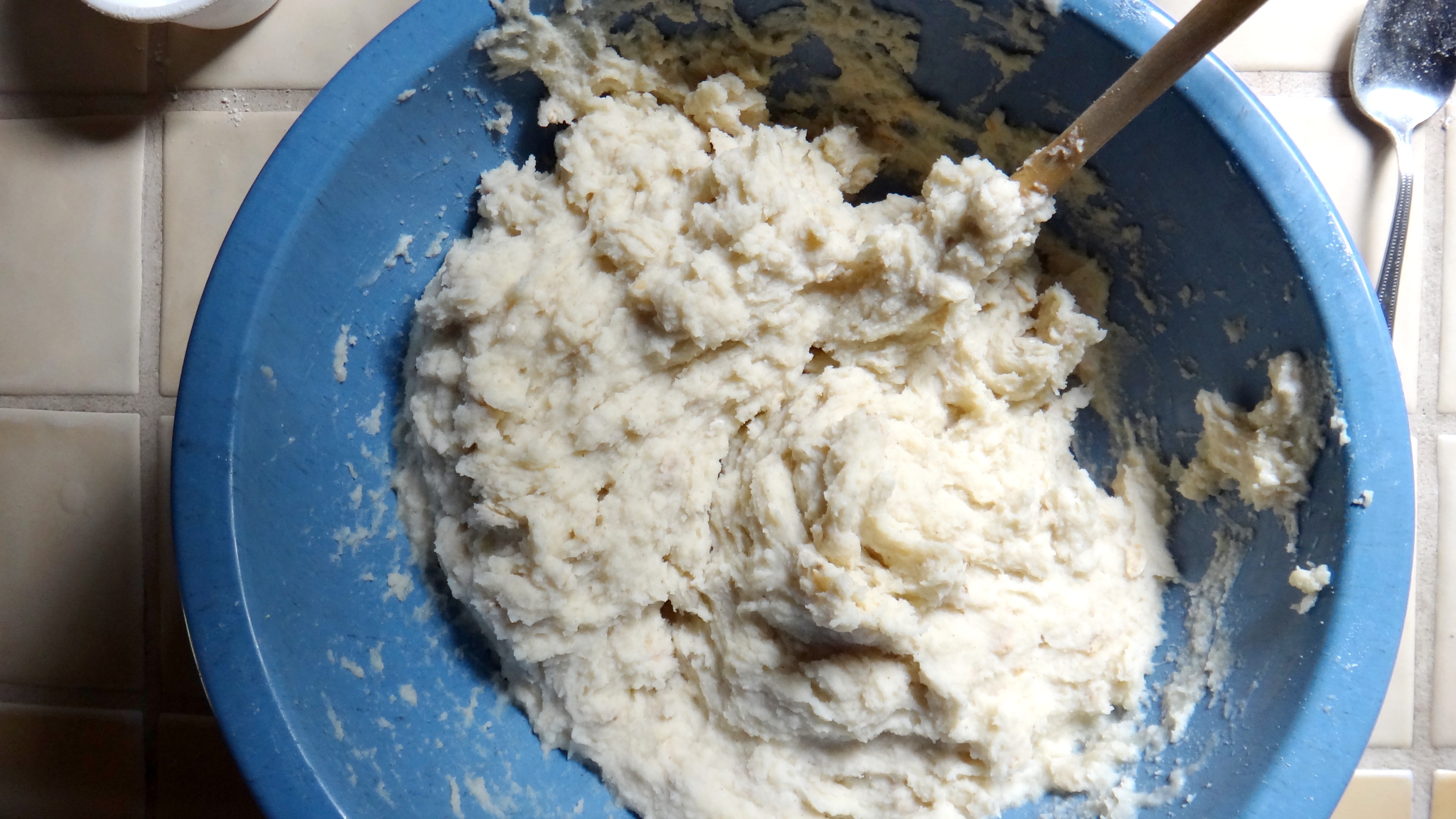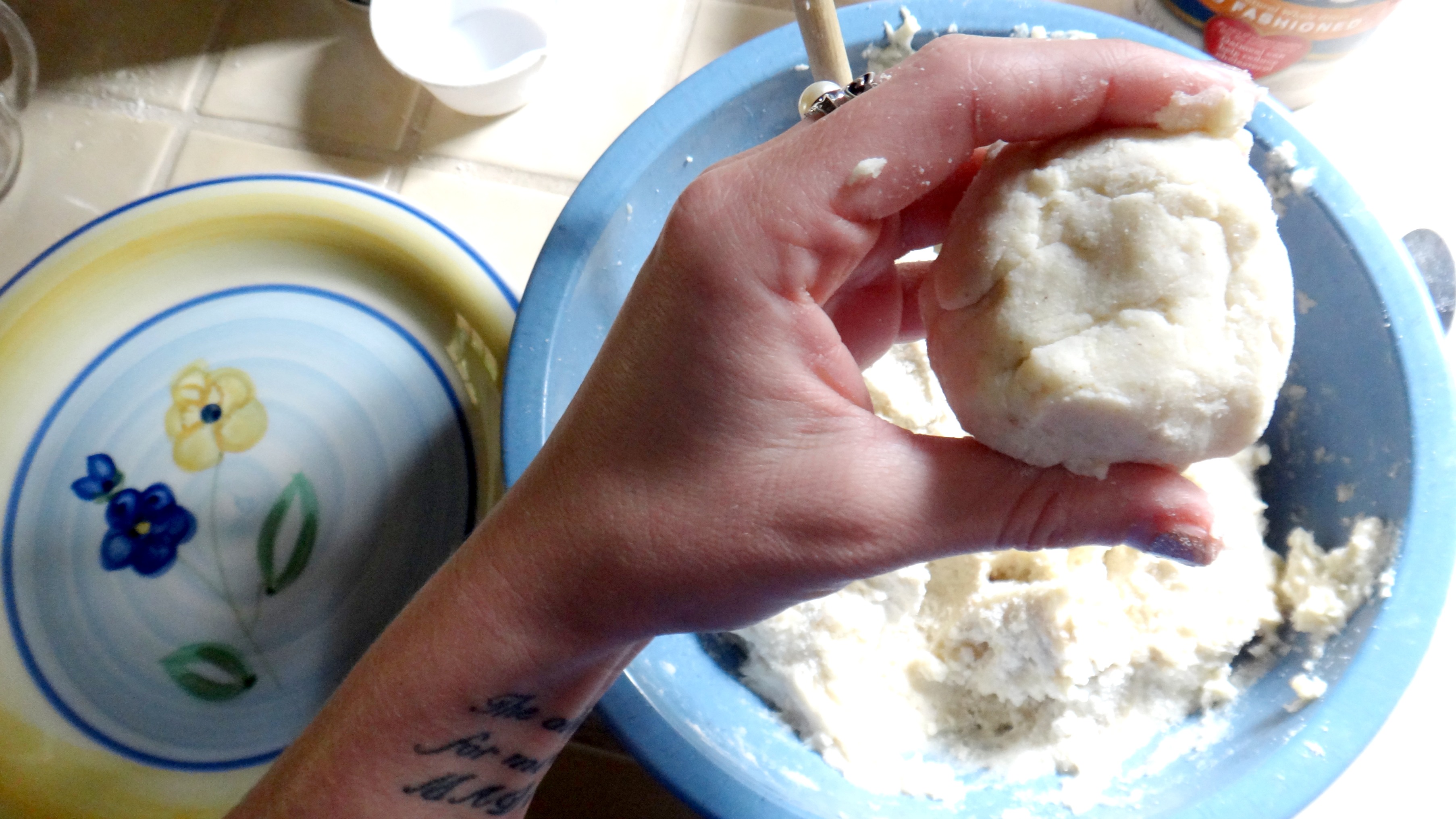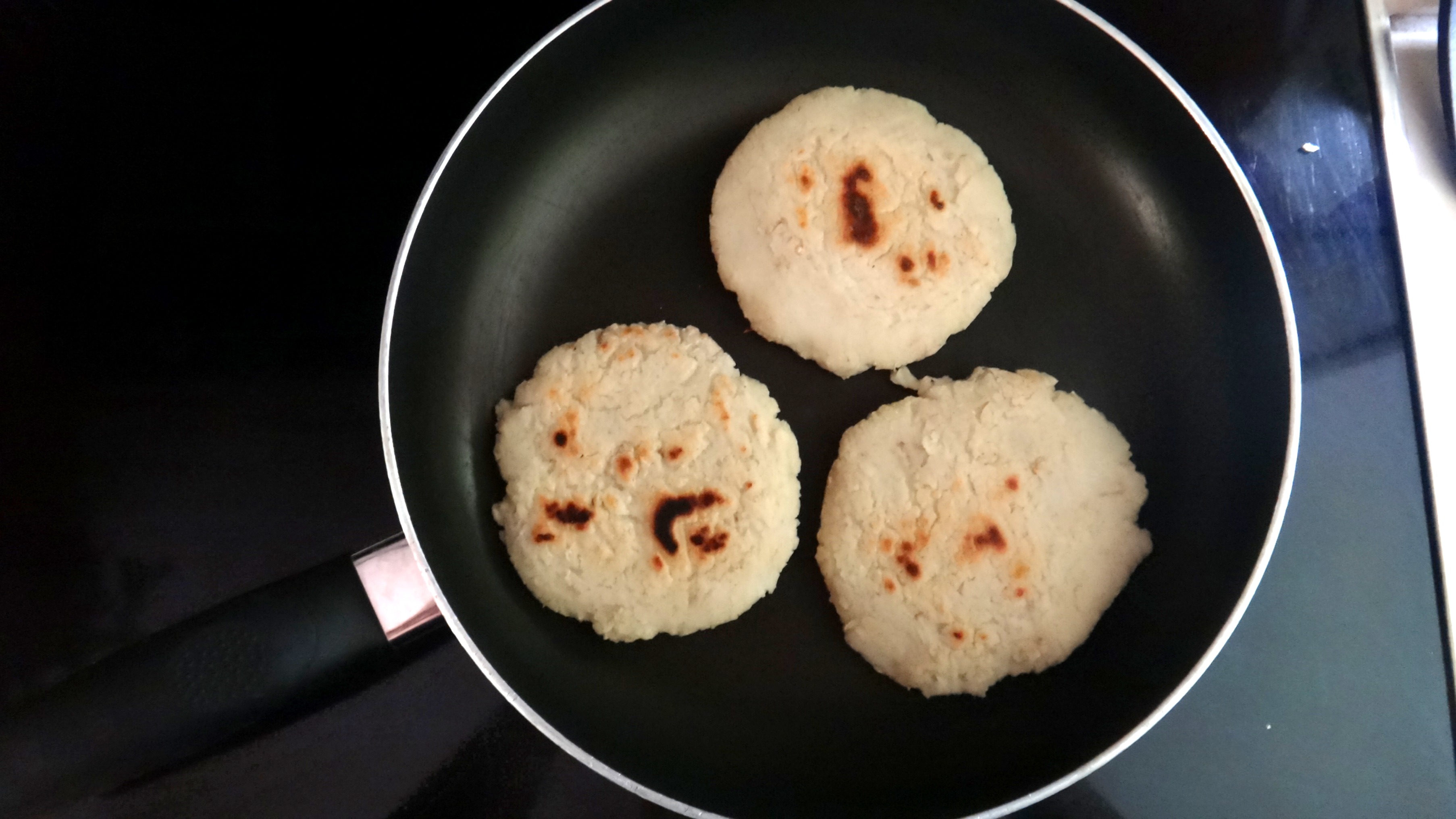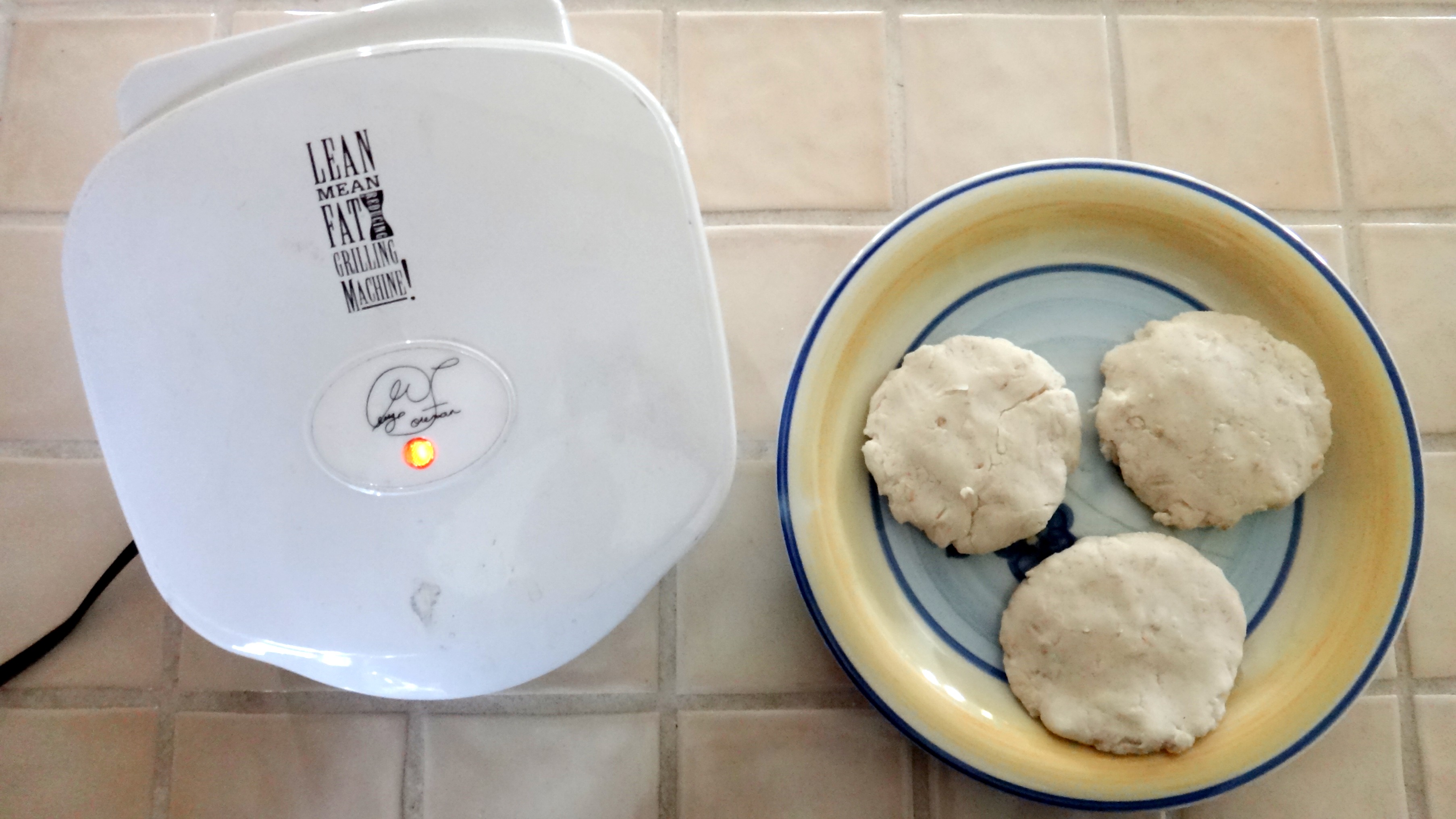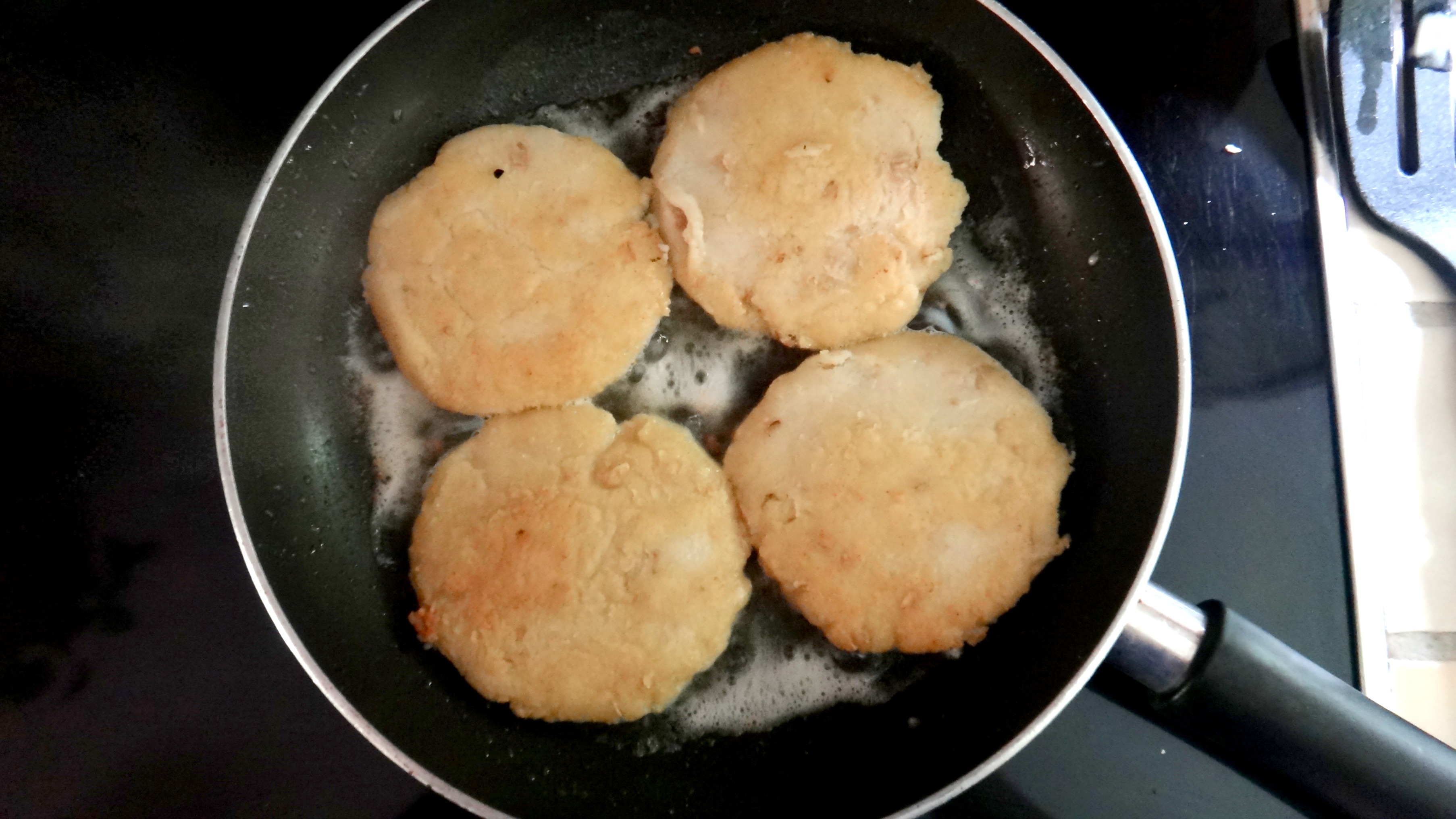This recipe for Venezuelan arepas (or arepas venezolanas) is one I picked up during the month I volunteered with La Fundación Aldeas de Paz in Santa Elena de Uairén, Venezuela, which lies on the southern border near Brazil.
Arepas are savory corn pancakes; I learned the recipe and technique from a woman named Aurita, the adorable little Venezuelan mother of our volunteer coordinator, Cristóbal (and grandmother to his two beautiful children). It’s a super-simple recipe (my favorite kind, as you know) requiring only five ingredients.
The base is harina de maíz (corn flour) which can be referred to by many names: masa, masarepa, masa al instante or masa instantánea, to name a few. It’s used to make a wide variety of Latin foods, including tortillas, tamales, pupusas, empanadas and arepas.
You probably won’t see oats in any other recipe for arepas venezolanas, but I’ve included them in mine as a tribute to Aurita, who insisted the tiny sprinkling of oats she added to the otherwise low-fiber dough would greatly increase its nutritional value. All I could do was laugh and play along…after all, abuelita knows best.
Ingredients:
2.5 cups masa instantánea
1/2 cup oats
1 teaspoon salt
3.5 cups hot water
1 tbsp olive oil
Warning! This recipe makes a ton of arepas (~10) so plan to feed a lot of people or consider reducing amounts by half.
Method:
1. Mix dry ingredients in a large bowl.
2. Add hot water 1 cup at a time, mix thoroughly with a wooden spoon. Add oil and distribute evenly.
3. Once the dough has had a chance to cool (~5-7 minutes), use your hands to make small balls that are roughly the size of a tangerine. The dough will be sticky, but if you’re unable to roll it into a ball, slowly add more flour; if it’s too dry, add small amounts of water until desired consistency is achieved.
4. Flatten the balls into discs by passing them back and forth from palm to palm, using gentle pressure. Thicker discs will require longer cooking times.
5. Choose your cooking method:
a) Grill on a cast-iron skillet (or any old skillet) over medium heat.
b) Toss them on your lean, mean, George Foreman grillin’ machine (or even better, a real grill).
c) Fry them up in a healthy amount of butter (I bathed them in ~4 tbsp) over medium-high heat.
Cooking times will vary depending on the size and thickness of your arepas. Mine were about 1 cm thick and were still a bit doughy inside even after 10 minutes with each different method, so you may have to experiment a bit to get them just right.
I haven’t figured out how to keep the dough from cracking during the flattening process (if you do a Google image search of Venezuelan arepas, mine will look positively amateur in comparison…so, uhh, don’t do that!) so I’ll have to experiment with the dough as well.
In Venezuela, we would eat grilled arepas for breakfast, cut in half and dressed with a tiny drizzle of olive oil, avocado, and queso blanco. I didn’t have the latter, so I improvised with shredded mozzarella and zapped my arepas in the microwave to melt the cheese a bit.
The most popular way to eat an arepa in Venezuela is to cut it open like a pita pocket and fill it with anything you’d eat on a sandwich. I commonly saw ham and cheese, chicken salad, shredded pork, or tomato, cheese and avocado. But you can fill it with anything you like! And since I’ve got enough arepas leftover to feed a small army, I’ll be enjoying them all week and trying out all sorts of fillings.
For my first unsupervised attempt, I think it went pretty well. We (my mom and I) both liked the taste of the super-fried ones, but the others were cooked more thoroughly. I’ll definitely be making them thinner next time.
So, what do you think? Would you try Venezuelan arepas yourself?

